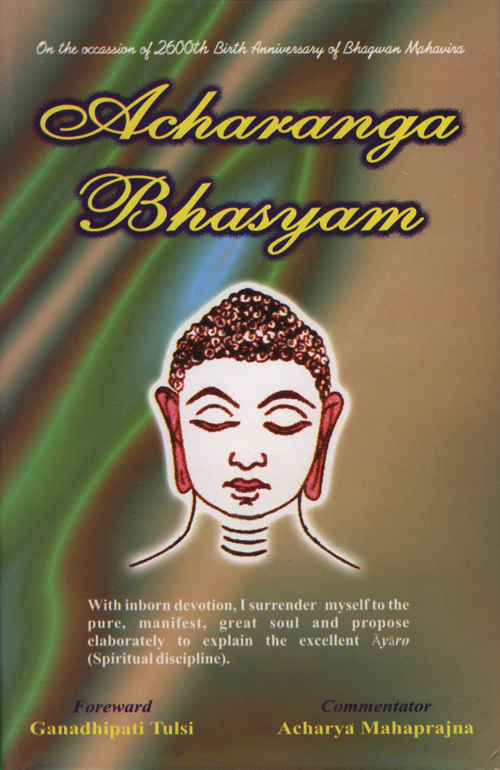The name of the present chapter is 'Shaking off (Dhuta) through austerity'. This topic is accepted both in Jainism and Buddhism. In the Viśuddhimagga of the Buddhist, thirteen kinds of this austerity have been enumerated. In the present chapter, five of these kinds have been explained. The topic has been compiled in five sections as follows: Shaking off of—
- The attachment to one's own relatives.
- The karmic material bodies.
- The attachment to the body and the outfit.
- The pride with respect to the supernatural powers and pleasurable feelings.
- The favourable and unfavourable feelings.[1]
This doctrine embodies the principles of the wearing off of karma. The causes and conditions that lead to the wearing off of karma are called the ways of shaking off. The sense of attachment and possessiveness is the main cause of karmic bondage. The body, the outfit and the near and dear ones nourish the sense of possessiveness. In essence, the aim of the practice of shaking off is the renunciation of relationship with things that nourish the sense of possessiveness. The renunciation of the sense of possessiveness is possible of achievement only by an excellent type of knowledge, that is the knowledge of the self.[2] The persons devoid of self-realization feel depressed in spirit.[3] The first step towards practice of shaking off is self-realization. In the perfect state of self-realization, the attachment to the body is destroyed, and the life force grows strong. It is unimaginable that a person should not seek remedy, when he is attacked by any kind of malady. A malady is to be endured, one should not feel deeply concerned with it. Such determination is possible only if the life force is strong enough.[4]
It is difficult to do away with clothing. The Lord has proclaimed this as a super doctrine.[5] The solitary life is also a kind of great penance. This solitary life has been described in the Uttarādhyayana as the principal path to the practice of the feeling of soleness of the soul. This helps in fulfilling the self-restraint, inhibition and ecstacy.[6]
In the present chapter, there are important guidelines for delivering religious discourses. In the atmosphere of sectarianism all around, the following scriptural text is supremely relevant - a monk discerningly expounding the principles of religion should neither be an impediment to himself, nor to others, nor to any living and sentient beings, viz., animate, living beings, soul and living substances.[7]
Many religious doctrines are compiled in this chapter. This compilation is the source or the precursors of the ten kinds of ascetic religion.[8]
In this chapter, the expression "the knower of the Vedas" points to the wide outlook of Lord Mahāvῑra. In those days, a knower of the Vedas occupied a glorious position. Lord Mahāvῑra did not accept the validity of the Vedas or the knower of the Vedas, but even then they where not ignored, but were respected by the reinterpretation of the Vedas and scholars, conversant with them.[9]
There were various doctrines prevalent in those days, for example, the doctrine of soul, knowledge, Vedic lore, righteousness, Brahman, Universe, Karma and religious practice. All these doctrines were synthesized by the Lord in order to give a new approach to them and introduced a new kind of religious practice. For example, the monistic doctrine was applied to the ethical principle of non-violence in the statement like: thou are indeed thee whom thou intendest to kill.[10]
In this chapter, special mention is found of the words—unaffected island,[11] well-propounded doctrine,[12] well-balanced self,[13] mind turned inward,[14] possessed of right vision,[15] dry,[16] breaker,[17] well chiselled wooden plank[18] etc.
In this chapter many varieties of austerities have been prescribed which effect shaking off or dissociation of karma. It follows from these descriptions that where there is the practice of special forebearance, lightness and austerity, there occurs shaking off of karma. The root of the tradition of the intensive course of penance is to be traced in the doctrine of shaking off explained in this chapter.
uvagaraṇasarῑrāṇaṃ cautthae gāravatigassa..
uvasaggā sammāṇaya vihūāṇi paṃcamaṃmi uddese.
davvadhuyaṃ vatthāῑ bhāvadhuyaṃ kamma aṭṭhavihaṃ..
 Acharya Mahaprajna
Acharya Mahaprajna

